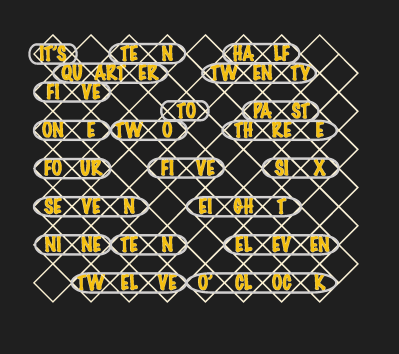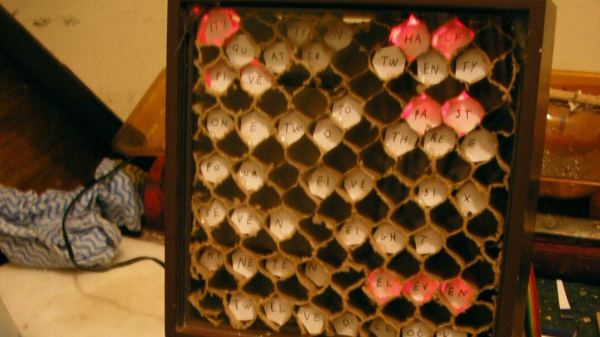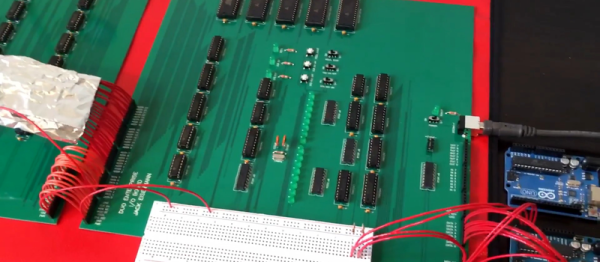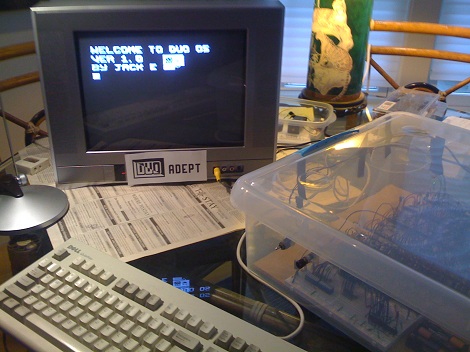Self-acclaimed computer nerd [Kevin Koster] was tired of designing new TTL-logic clocks before finishing his previous designs. So he finally buckled down and completed this unique word clock, which uses only a handful of TTL chips. We can’t disagree with his friends who complained that they can’t read [Kev]’s handwriting, so perhaps this diagram will make it clearer.

Besides being a nice logic-only project, this will give an example to younger folks how much effort went into things which are so simple to implement today. We don’t see a Karnaugh map on the project page for sorting out the logic diodes driving the minutes LEDs. If [Kev] did it on the fly, as the rat’s nest of diodes on the schematic would suggest, we’re not sure whether to scold him or be impressed (he does redraw that logic very neatly on a separate sheet).
No worries about high speed wiring on this project. The main oscillator derives time from the 50 Hz AC transformer power supply, and outputs a reference clock signal of 16.7 mHz (not MHz), or once per minute. This is divided down to 3.3 mHz for the 5-minutes counter and again to 277 uHz for the hour counter. If you live in a 60 Hz power mains country, you’d have to modify the oscillator section. Or you could contact [Kev] on his site, as he is considering making this available as a kit worldwide. If you like word clocks, we’ve covered quite a few of them before, including this crazy-complex rear-projection one.













